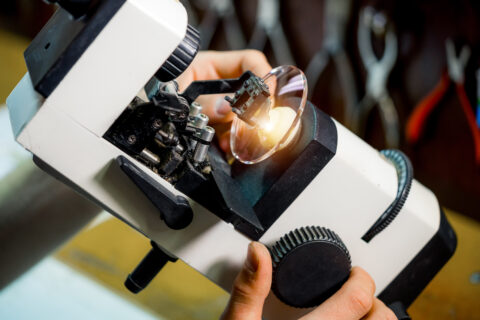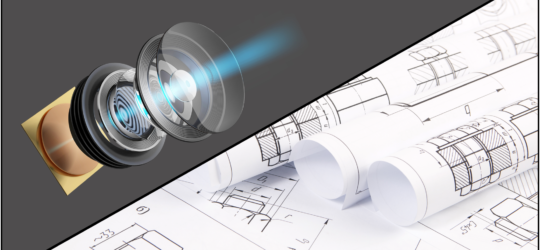R&D



R&D
TOYOTEC is constantly striving to develop new optical design technologies and is engaged in a variety of R&D activities.
TOYOTEC’s patent information is listed below.
Wide-angle lens and wide-angle lens unit
Abstract
PROBLEM TO BE SOLVED: To provide a wide-angle lens capable of favorably correcting various aberrations with a five-lens configuration. A wide-angle lens 11 is composed of a front group G1 and a rear group G2 having a positive refractive power in order from the object side and from the object side. In order from the object side, a first lens L1 which is a meniscus lens having a negative refractive power and convex toward the object side, a second lens L2 which is a meniscus lens having a negative refractive power and convex toward the object side, and a positive lens The front lens group G1 is composed of the third lens L3 having the refractive power of, and at least two surfaces have rotationally asymmetric surfaces. The rear lens group G2 is composed of, in order from the object side, a fourth lens L4 having a positive or negative refractive power and a fifth lens L5 having a positive or negative other refractive power, and at least one surface thereof is rotationally asymmetric. Has a face. [Selection diagram] Figure 1
Wide-angle lens
Abstract
This central projection wide-angle lens (10) comprises, in the order from the object side, a front group (G11) having a negative refractive power, a diaphragm (12), and a rear group (G12) having a positive refractive power. The front group (G11) includes a negative lens (L12) having a negative refractive power and having a concave correction surface (R104) on the surface facing an image. The correction surface (R104) has a local maximum value (MV) of a second derivative acquired by differentiating a sag amount y twice, and thus the correction surface is capable of minimizing barrel and pincushion distortions while appropriately correcting aberrations.
Wide-angle lens
Abstract
Provided is a large-aperture wide-angle lens that can excellently correct aberration. A wide-angle lens (10) comprises a first group (G1) having a negative refractive power and a second group (G2) having a positive refractive power sequentially from the object side toward an image surface (13) side. The first group (G1) comprises a meniscus-shaped first lens (L11) that has a negative refractive power and that is convex to the object side, and one or two lenses (L12, L13), sequentially from the object side. The lens surface (R6) on the side of an image surface (13) of the one of the one or two lenses is an aspherical surface that is convex to the image surface (13) side near the optical axis (Ax) and that is concave to the image surface side at the effective-diameter peripheral edge. The second group (G2) comprises three lenses (L21, L22, L23) having a positive refractive power.
Engineering Services


Lens / Lens Unit Development
Learn More

Design / Development Support
Learn More

 JP Phone: 0533-85-3000
JP Phone: 0533-85-3000

